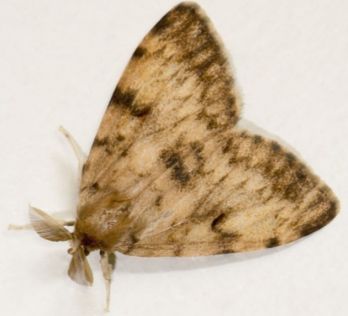Spongy moth
The spongy moth, formerly known as the gypsy moth, is a destructive pest posing a high biosecurity risk. There are 3 varieties of spongy moth, distinguished as sub-species:
- European (Lymantria dispar)
- Asian (L. dispar asiatica)
- Japanese (L. dispar japonica).
Background
These pests are active in many parts of Asia, Europe, North Africa, and North America.
The likelihood of spongy moths entering Australia as hitchhikers depends on international transport factors. These include the volume of trade, previous ports of call, and passenger numbers. The 4 main potential entry pathways are:
- imported vehicles and machinery
- cargo containers
- sea vessels and aircraft
- military equipment.
The Ports of Entry Trapping Program (PETP) monitors for spongy moths every year. Trapping programs are established in and around container parks, freight storage, and transit areas, as the moths are attracted to bright light.
The flight season (July to September) until hatching time (April to May) is when eggs are most likely to enter Australia.
Impacts
Spongy moths would be extremely difficult and expensive to manage due to their high reproductive rate, causing problems for farmers, foresters, gardens, and the natural environment.
The moths attack more than 650 species of plants worldwide. Their preferred hosts include oak, alder broadleaf trees, Douglas fir, and western hemlock needle trees. Through limited testing of Australian species, at least 55 hosts are known to be vulnerable to spongy moth.
Outbreaks usually begin on preferred hosts and move to other species as the spongy moth infestation grows. Large populations of these caterpillars can completely defoliate trees, causing tree growth reduction, crown dieback, and death.
Identification
Spongy moths lay between 100 to 1,000 eggs in masses that are covered in yellowish scales. These are found on hard surfaces – usually tree trunks, but also on logs, outdoor furniture, nursery stock, pallets, shipping containers, and the hulls and rigging of ships.
The caterpillar form is up to 7 cm long, dark and hairy, with 2 rows of blue and red raised spots along its back. They can travel long distances by moving to an elevated position and spinning silk balloons from their head, which catch in the wind. The larvae stage has a high feeding capacity, consuming about 1m2 of green leaves in their lifetime.
As moths, adult males are brown with dark patterns, and a wingspan of 3 to 4 cm. Females are pale yellow with wavy brown bands across the forewings and a larger wingspan of 4 to 7 cm. The European female spongy moth is usually flightless, but the Asian varieties can fly up to 40 km before mating.
Adults do not feed or adversely impact on host tree species. Caterpillar silk strands, droppings, destroyed leaves, egg masses, and dead moths indicate the presence of this pest.


